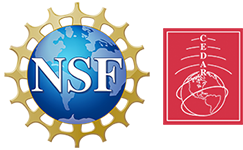Investigating Drivers of Cusp Region Neutral Density Enhancements Using RENU 2 and Satellite Observations
The polar cusp region is a highly variable environment, impacted by entering solar wind particles and exiting ionospheric ions. The dynamics of this region are not well understood or accurately captured by models. Anomalous neutral density enhancements in the cusp have been studied for decades; however, the relationship between these density enhancements and potential drivers such as electron precipitation, small-scale field-aligned currents (FACs), Joule heating, and atmospheric gravity waves (GWs) remains unclear.
The Rocket Experiment for Neutral Upwelling 2 (RENU 2) was launched on December 13, 2015 and transited the cusp region during a neutral upwelling event. RENU 2 carried an extensive instrument suite, including an ultraviolet photomultiplier tube (UV PMT) instrument that measured neutral atomic oxygen emissions (OI 1304 Å and OI 1356 Å). The RENU 2 data, in conjunction with measurements from supporting spacecraft such as Gravity Recovery and Climate Experiment (GRACE) and Defense Meteorological Satellite (DMSP), provide a comprehensive dataset for studying drivers of neutral density enhancements in the cusp region.
This study will identify density enhancements in the cusp region using GRACE data and compare tomographic reconstructions of DMSP Special Sensor Ultraviolet Limb Imager (SSULI) data with RENU 2 observations. We will analyze the presence of potential drivers, such as electron precipitation and GWs, that coincide with the identified enhancements in order to assess their influence on the observed density variations.
